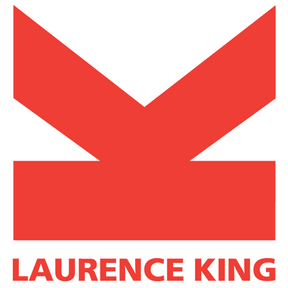It's an exciting time for fashion marketing, with a huge emphasis on both engaging customers and creating a strong, authentic brand. Here fashion experts Barbara Graham and Caline Anouti introduce their new book Promoting Fashion – a practical guide for anyone in the business of fashion.
It was while teaching a module specialising in fashion business start-up that the thread of how information should flow through the book took shape, and its reason to be out there in the market became more apparent. Caline had taken a fashion promotion degree herself and felt that back in the day it was very much a ‘do it yourself’ approach and whilst teaching we both discussed that there was still missing literature and guiding books within the area.
Caline was lecturing at Istituto Marangoni alongside Harriet Posner the author of Marketing Fashion who was just finalising the second edition of her book. She mentioned to Harriet that she was interested in writing a textbook within the fashion promotion area to help and guide students with the knowledge that she has acquired all these years. She approached Harriet who contacted Laurence King. There was a gap in the market for something focussing on the promotion element of the marketing mix – but how could we give the subject a USP?
![[object Promise]](https://dy91lda5iu2e3.cloudfront.net/59296153794/25957/Lacsote_Spring_14_2.jpg)
![[object Promise]](https://dy91lda5iu2e3.cloudfront.net/59296153794/25956/Lacoste_Spring_14.jpg)
It struck me how ideas-driven we still are in the fashion industry, and let’s face it, those ideas take so much effort and organisation to realise, it’s no surprise they govern our decision making. In the book we look at how marketing has evolved to a sophisticated third era (chapter 3), centred on attracting and maintaining consumer engagement and interaction. However with fashion, it’s often the sheer desire to see our garments making a difference to people’s lives which is the thing that inspires us and drives us forward. I say ‘we’ and ‘our’ as I have done exactly the same thing myself. In the development of Laundry Maid Jeans (a brand I founded with an ex-colleague), I focussed so hard on getting third-party PR and selling into buyers that I forgot to think about how to form a direct relationship with our customer. And what other communication tools would help us do this… Of course I was convinced that once fashion editors, buyers, and consumers saw the product they would be immediately won over, and in some instances this was the case.
But we relied too much on luck and chance – in exactly the same way as I see students doing today. In the writing of this book we ask the question: is there a formula that could be applied? Ultimately it’s the consideration of the customer, finding a way to build a strong brand, and the balanced use of all the communication tools that will replace the element of chance with a proposition that’s much more likely to work.
![[object Promise]](https://dy91lda5iu2e3.cloudfront.net/59296153794/25966/Vivienne_Westwood.jpg)
![[object Promise]](https://dy91lda5iu2e3.cloudfront.net/59296153794/25962/JPG.jpg)
The book takes BA students of fashion marketing, fashion promotion and fashion communication, and practitioners who may not have had any branding or communication training, through the logical processes of communicating a brand to potential audiences.
Chapter 1 encourages an examination of the consumer, and details the existing methods the fashion industry use to profile consumers that result in an accurate, specific profile, increasingly based on actual behaviour. The chapter also looks at the science of consumer trend watching, enabling a study of the consumer not just as a shopper but as an inspiration for innovative promotion ideas.
Chapter 2 takes readers through techniques to implement to help a brand idea resonate with its chosen audiences and how the strength of the brand’s identity and image can then be analysed and measured.
Chapter 3 examines the theory of integration, or how the communication tools can be combined most effectively to meet the desired objectives of a fashion campaign.
Chapters 4-11 then give a breakdown of each of the communication tools in turn, looking at the advantages and disadvantages of each, and with plenty of examples of successful use.
In Chapter 12 the reader is then introduced to forming a marketing communications plan, thinking about costing, and finally measuring the effectiveness of the chosen plan of action.
![[object Promise]](https://dy91lda5iu2e3.cloudfront.net/59296153794/25959/YSL.jpg)
There is some theory in there. Caline and myself met as lecturers at London Metropolitan University where the subject was taught from a purely academic viewpoint. This experience helped us distill which of the theoretical models we felt would be the most useful in the actual practice of promoting a brand to targeted audiences. We have tried to keep this relevant and well illustrated with examples of recent fashion use. And of course the interviews.
The book contains ten interviews with industry professionals working at the cutting edge of fashion marketing during this challenging, changeable and volatile period in the fashion timeline. Their insights at times challenged us with our plans for the book, most typically with something we hadn’t thought of, or a shake-up to how we thought things were working. The most exciting thing was the directions for the future of fashion they gave us – helping readers go some way to hopefully future-proof their ideas as far as is possible in today’s market!
![[object Promise]](https://dy91lda5iu2e3.cloudfront.net/59296153794/25960/Balmain.jpg)
If you teach on a course in the creative arts and would like to review Promoting Fashion with a view to recommending it to your students, please complete the request form here. Your inspection copy will be free of charge if we receive your fully completed feedback form within 40 days of dispatch.

